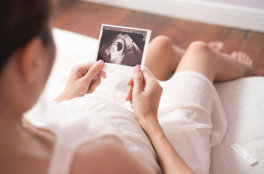What is a Forceps Delivery?
Forceps are a metal instrument that look like large tongs. They’re curved to fit around the baby’s head and provide protection as the baby is pulled through the pelvis.
A forceps delivery may be required if the presenting part of a baby usually the head, or the buttocks in the case of a breech delivery, is in the wrong position and can’t make its way naturally through the pelvis. This is known as an obstructed labour. It is important to use forceps urgently if there are any indicators of obstructed labour for example foetal distress, a drop in the baby’s heartbeat and/or sign(s) of oxygen deprivation. A swift delivery of the baby is needed in these urgent circumstances.
During a forceps delivery, a cut to the perineum (an episiotomy) may also be made to reduce the risk of tearing when the forceps are applied.
What is a Vacuum Delivery?
A vacuum delivery, also known as a vacuum extraction or vacuum assisted delivery, is another common obstetric intervention which may be needed when the head of the baby is too high in the pelvis or if for example, the cervix isn’t fully dilated.
A small cup is put on the baby’s head and suction is applied in between the mother’s contractions to slowly pull the baby down the birth canal. Sometimes, a mother needs to push at the same time. Vacuum delivery can only be attempted three times and if the cup slips from the baby’s head for a fourth time, the doctor must abandon the vacuum delivery and proceed to a C-Section.

Consent
Before proceeding to a forceps or vacuum delivery, the patient should be properly consulted and advised of the risks that come with the procedure. Before any procedure is started, the patient must agree to undergo the procedure. It is your right to make your own decisions about your body, when in labour and at any other time. Agreeing to medical treatment is legally known as giving consent.
If the situation is an emergency and the decision to use forceps or a vacuum is an urgent one, consent needs to be obtained quickly.
When giving your consent, you will be asked to confirm that you understand the procedure and why it is needed. You will typically need to consent that you understand the following:
- Nature of forceps delivery
- Reasons for forceps use
- Benefits of forceps delivery
- Risks and complications
- Alternative options
- Questions and clarifications
Before the procedure, you will be prepared for treatment. A local anaesthetic is usually injected to numb the area between the vagina and anus if an epidural is not already in position, to provide pain relief.
What are the Risks of Forceps and Vacuum Deliveries?
There are risks with both procedures.
For the mother, these include:
- Third- or fourth-degree tears extending from the vagina to the anus or rectum. Tears need careful suturing but if a tear occurs and is missed, this can lead to a woman suffering permanent faecal incontinence and in the worst cases, needing a permanent colostomy
- Urinary incontinence
- A higher chance of blood clots forming in the legs or pelvis. A mother can help to avoid this by moving around as much as she can after the baby’s birth
- Difficulty with future births
Risks to the baby can include:
- Marks to the baby’s head caused by the suction cap or forceps, and sometimes cuts are caused to the baby’s face or scalp. These usually disappear within a few days
- Bruises to the baby’s head, which also usually disappear with time
- Scarring
- More serious injuries, including skull fractures or damage to the cranial nerves resulting in facial paralysis
- Brain damage and seizures
A Safer Alternative to Caesarean Sections
Woman often feel that Caesarean Section is a safer mode of delivery, but the risks associated with C-Sections are greater than those concerning forceps or vacuum deliveries. The obstetrics team aims to safely deliver the baby and protect the mother’s health so wherever possible, a forceps or vacuum delivery will be considered as an option before proceeding to any surgery.
How Simpson Millar Can Help You
Childbirth is unpredictable and this is why healthcare professionals have to provide the best level of care and act immediately if anything goes wrong.
Falling short of standards expected can lead to harm or injury to the mother, baby, or both. Whilst on the whole, medical practitioners aim to provide a reasonable standard of care, mistakes can still happen.
If you feel that avoidable mistakes were made during the delivery of your baby, and that you or your baby suffered an injury as a result, get in touch with our lawyers today. You may be eligible to make a Medical Negligence Claim. We can advise on the guidelines, but typically you must initiate a claim within three years of discovering negligent treatment.
Our team of specialist Medical Negligence Solicitors have worked on cases where treatment provided falls below a reasonable standard, and results in injury. You may have a successful case if your treating practitioner was in breach of their duty of care in any of the following ways:
- Giving inadequate healthcare
- Keeping improper records
- Performing surgery to an inadequate standard
- Administering incorrect medication/ doses
- Misdiagnosing conditions, or failing to make diagnosis within a reasonable, timely manner
Our friendly legal team will be able to answer all of your questions to help you take the best course of action, depending on your circumstances.
We at Simpson Millar have strong values. We pledge to always provide transparent, honest and jargon-free legal advice, so you understand fully whether you are likely to be successful if you were to bring a birth injury claim. If mistakes were made during your childbirth, then let us help you with your claims process.
As always, we’ll keep you updated with progress at all stages of your claim. We want to make sure that avoidable mistakes are not made in healthcare, ensure lessons are learned when mistakes are made and that the provision of healthcare is to a reasonable, acceptable standard for patients. We can look at your case under a Conditional Fee Agreement (also known as a No Win, No Fee) so we can commence our investigations without requiring funds upfront from you, to pursue such a case.
Feel free to call our Medical Negligence Lawyers today, and we can talk you through your options. Simply call 0800 260 5010 and we will be happy to help. We look forward to speaking with you, and putting your mind at ease.












